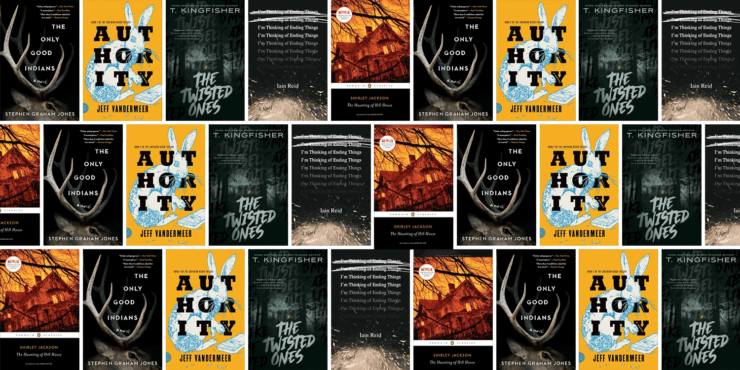It’s relatively trivial to scare someone with a moving image—pan the camera across the darkness, a sudden blur as the witch jumps out at you, cue screams.
But truly talented authors can evoke jump scares using only text—that sudden recontextualization where you’re in the flow and you get to the end of the sentence only to realize holy crap, the call is coming from inside the house.
This list wasn’t hard to devise, because each of these novels are engraved in my memory. There I was, safe in my bed, reading a book with the foolish idea of but words will never hurt me—and then the little suckers leapt out and mugged me.
Then again, why read horror books if you’re not chasing that adrenaline shot?
Obviously, each of these jump scares will involve spoilers for the novels involved—but if you want to see some truly great technique, then a spoiler or two is well worth the price.
And if you’ve got your own jump scares from novels? Sound off in the comments.
The Only Good Indians by Stephen Graham Jones
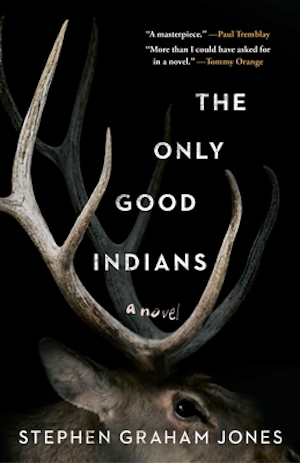
The Source of the Scare: That second-person viewpoint you forgot about.
The Only Good Indians is told from several points of view as it cycles through its victims. Years ago, several foolish Blackfeet boys went on a hunting trip, where they committed a terrible transgression against nature. Now, years later, an elk-headed monster has arisen to stalk them down, one by one—not to just kill them, but to drive them insane.
And Stephen Graham Jones uses those tight viewpoints masterfully, letting us see these ordinary men struggling with their jobs, their love lives, their children, before the elk-headed monster goads them, one dreadful step at a time, into paranoia, madness, and murder.
But the elk-headed monster also gets their own point of view, and it’s the only point of view written from the second person. There are whole chapters where you observe the men you’re hunting, taking in their lives…. And then in the next chapter, it switches back to a close third-person, and stays there for long periods of time to give you a front-ring seat to watch these poor bastards suffer.
Yet there comes the point where a few of the surviving friends build a low-budget sweat lodge, a chipped-out pit with broken lawn chairs and a couple of tent poles draped in wet sleeping bags—all to give one of their sons a sample of the true Native American experience. The father’s waiting outside, bored, hoping it helps his kid. He inspects his gun because they plan to go hunting later, and—
After making sure it’s not loaded, he runs the bolt back and forth twice, swings it back like he’s tracking something, and, of all the places that night he could have pointed that barrel, he points it right at you.
At no point in this chapter has there been an evidence that you, Missus Monster, were lurking in the darkness—but there you are, and you just scared the hell out of us.
Good work, elk monster.
The Twisted Ones by T. Kingfisher
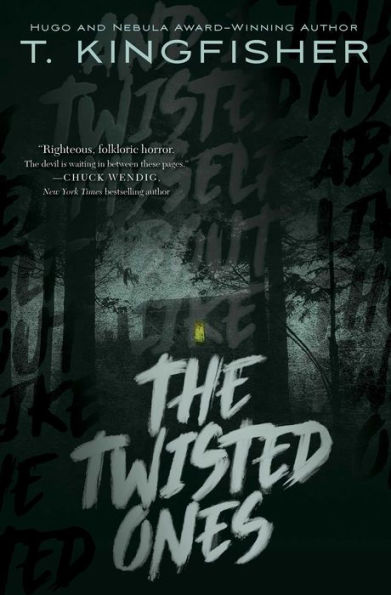
The Source Of The Scare: What does that noise mean?
The first thing I must tell you about The Twisted Ones is this:
The dog is okay.
This is not a spoiler, as the narrator very much assures you that Bongo the coonhound is okay, and the dog is lovable and dumb and perhaps the most realistic dog in fiction, but I was worried she was lying. But no.
The dog lives. So does the narrator, as this is a manuscript the narrator is writing.
Everything else? May very much not be okay.
Mouse, the narrator in question, is a woman who’s been tasked to clear out her dead grandmother’s home in the deep woods. Grandma was a hoarder, with rooms stuffed with old dolls and broken appliances and filthy clothes. But Grandpa has a very weird diary with pages Mouse keeps digging out of the mess, and there’s things in the back yard.
Worst of all, Mouse is an extremely pragmatic woman who does everything you could ask of a smart protagonist, making friends and sending notifications and taking all the warning signs seriously…
…and it turns out Mouse’s pragmatism doesn’t help her all that much.
Mouse is troubled by an erratic woodpecker that keeps her up at night, one of many running themes throughout the book. And that’s all fine and good, given the creepier ongoing events—until one day she realizes the things moving about in the night are living effigies, piles of bones tied together and somehow animated, and what she’s hearing is not a woodpecker but the stones hanging from the effigy’s ribcage knocking together as it’s been lurking outside her window this whole time.
The delight of The Twisted Ones is how much the narrative implies, and how cunningly, without filling in all the blanks—it’s packed with subtle horrors left to fester as you take the thought further than the protagonist does.
But that scene at the window is very much spelled out, and it is very much the definition of a ticket to Nopeville.
I’m Thinking of Ending Things by Iain Reid
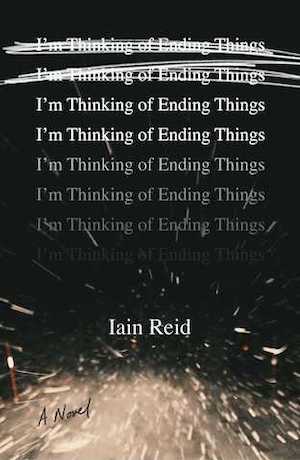
The Source Of The Scare: The Suicide
I’m Thinking of Ending Things could have been lifted straight from the Creepypasta sections of Reddit—it’s an ordinary tale with extraordinary details, the first-person story of a nameless girl who’s thinking of breaking up with her boyfriend as they’re off on a trip to meet his parents.
Her boyfriend Jake is just a little too intense and a little too pretentious, going off on pages-long philosophical tangents about movies. The parents are just a little too eager to demonstrate how wonderful Jake is and a little too inconsistent in the details about their beloved son’s past. And the girls at the local Dairy Queen are just a little too familiar with the girlfriend, both in terms of how they seem to know her (and, more worryingly, how she seems to know them even though she’s never been to this town before) and in terms of being completely disdainful.
And all the while, a raging snowstorm whites out the outside world.
So when Jake, driving back, veers off the main road against her protests, crazily determined that she should see his old high school, the nameless protagonist is locked alone in a dark school with a creepy janitor leaving mysterious notes for her.
Now, I told you there were spoilers before, but I’m Thinking Of Ending Things basically runs on its twist ending, which is so significant that I’m gonna give y’all a special chance to skip this next section:
…
…
…
——————BIG SPOILERS AHOY—————-
The twist is that the girlfriend doesn’t exist.
That’s right; the protagonist is Jake, now old, his once-bright future dwindled to a crappy job pushing a mop at a high school, his career squandered because he had a genius’ toxic arrogance without the intellect to back it up. And he’s envisioning what his life would be like if he’d only talked more to that girl he saw at a bar forty years ago, if he’d had a girlfriend, if he’d been able to bring someone home to his parents before they’d died.
And at the end of the novel, the girlfriend finally meets the janitor, realizes they’re all the same personality—the janitor hands her a coat hanger—
Then they all stab themselves through the neck with the sharp end, committing a most unexpected murder/suicide.
Jump.
—————END SPOILERS—————
The Haunting of Hill House by Shirley Jackson
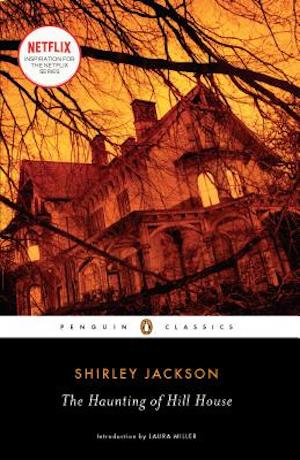
The Source of the Scare: “God! Whose hand was I holding?”
If you haven’t yet read The Haunting of Hill House, allow me to inform you that you have a gap in your reading that needs filling. Not only is it one of the all-time greats of horror fiction, with what Stephen King has lauded as perhaps one of the greatest opening paragraphs in fiction, but the bones of the novel have also formed the source of many movies and shows—including some classics in their own right, the latest example being Mike Flanagan’s Netflix series of the same name.
(Though full disclosure, you can skip 1999’s The Haunting unless you’re looking for a good Razzie night with your friends.)
But if you’re not familiar, well, many books run on a lean mixture of fear of the unknown and bewildering ambiguity, but Jackson is the queen of the vague threat. The Haunting of Hill House starts with four investigators checking out the paranormal rumors that surround Hill House. Strange events begin to occur—anonymous surges of violence and upheaval possibly fueled by their very presence. And the investigators themselves also start to act oddly, the very madness that infects the house’s walls seeping into their psyche…or is that the other way round?
At one point, Eleanor and Theodora are inside a dark bedroom, the beds pushed together while a low, childlike voice gurgles and warbles. They hold each other’s hands tightly for comfort, Eleanor drifting in and out of sleep as she hears this ghostly tormented babe –
And she snaps awake to find the lights on and Theodora in her own bed.
Cue the question: “Whose hand was I holding?” Cue the gut-wrenching scare.
…I should add that I did feel there was a distinct difference between this scene, which feels more jump-scary when compared to a quasi-similar scene in Stephen King’s Gerald’s Game—also adapted to film by Mike Flanagan, weirdly enough. That’s the book where poor Jessie is handcuffed to her bed after her husband started a kink scene at their secluded lake house and then had a fatal heart attack, stranding her without help. Starving and dehydrated, she hallucinates a ghostly figure she calls The Space Cowboy, who offers her a wicker basket of jewelry and bones.
There’s also a reveal for about The Space Cowboy, but…it doesn’t feel like a jump scare so much as a skin-crawling creep to me, even though it’s *very similar* to the rapid recontextualization in both Hill House and The Twisted Ones, and arguably more action-oriented. Why is that? If you got theories, sound off, I’d love to hear ‘em—with the understanding that what’s scary and how always, always comes down to personal taste.
Authority by Jeff VanderMeer
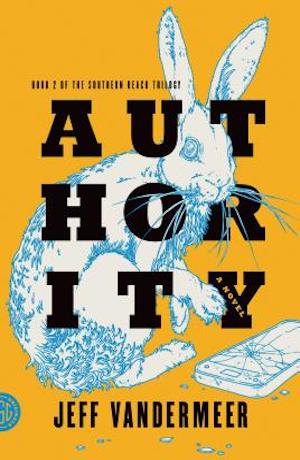
The Source of the Scare: Whitby, oh God, Whitby!
Authority is a weird sequel to an even weirder book—Annihilation was about a doomed, all-female squadron of nameless scientific investigators delving deep into an alien infestation that’s taken root in our world. The… place? dimension? hallucination?…is called Area X, and it is full of bizarre locations that have similarities to the St. Marks National Wildlife Refuge in Florida, but feature a spiraling staircase filled with madness, mimesis, spores and mutations, and the warped remnants of the eleven previous expeditions.
Worse, the leader of the expedition can trigger the group with hypnotic fugues by speaking the phrase “consolidation of authority”…signaling that the government knows more (or, more frightening, knows less) about what’s going on than they’d implied.
Authority whips us back to the Southern Reach, the government agency overseeing Area X…and at first, you’d think it couldn’t be as weird, because we’re just following John Rodriguez (code name: “Control”) as he navigates the bureaucratic waters of a department tasked with both investigating and covering up the now-expanding Area X. His mother and grandfather got him the position largely by nepotism, his assistant director despises him, and the mysterious handler who supervises him is merely a voice on the phone.
Convinced there’s something more here he needs to know, Control tries to follow the squirrelly Whitby, and eventually finds his true office in a hidden trap door in the ceiling. Which is a pure madness den, the walls covered with paintings and scarred photos of the entire Southern Reach staff, murals of “a giant hog and a slug commingled,” the administration portrayed as a pantheon of boars and jellyfish.
Then Control sneaks past a shelf of paints to look at an incomplete portrait of himself, ignoring the draft wheezing through the crawlspace, to see that Whitby has drawn him as a leviathan surrounded by flurries of cramped, wild words—
And then he realizes the draft is Whitby, breathing heavily on his neck.
You’d think that would be bad enough, but Whitby is crammed into the shelf, boneless and fishbelly-white, “like something incubating”—and Whitby has been here long before Control pulled the trap door down…
***
As always, there’s definitely more jump scares in books through text only—and I’d be curious to see what your takes are!
But one last thing before I let you go: Boo.
Ferrett Steinmetz is the author of the novels The Sol Majestic and Automatic Reload from Tor Books, as well as the ‘Mancer trilogy and The Uploaded. He is a graduate of both the Clarion Writers’ Workshop and Viable Paradise, and was nominated for the Nebula Award in 2012, for his novelette Sauerkraut Station. Ferrett can be found on Twitter as @ferretthimself, and his new podcast, …And We Will Plunder Their Prose, analyzes the writing techniques of great modern speculative fiction.










